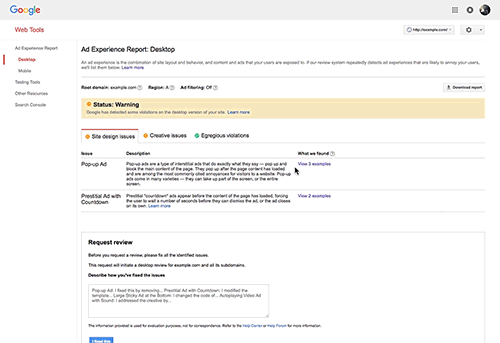Google is to start filtering out “annoying ads” from next year on its Chrome browser, and is giving publishers a new way to pay for advertising in the process- by charging customers using ad blockers.

The web giant has started to inform publishers that it will add that aims to only filter out the most annoying ads.
By giving publishers advance notice, Google hopes to get them to adapt less intrusive advertising formats. The company is also offering publishers affected by ad blockers another way to monetise their content.
“t’s far too common that people encounter annoying, intrusive ads on the web—like the kind that blare music unexpectedly, or force you to wait 10 seconds before you can see the content on the page.”
In a blog post, Sridhar Ramaswamy, Google ads and commerce SVP wrote: “These frustrating experiences can lead some people to block all ads—taking a big toll on the content creators, journalists, web developers and videographers who depend on ads to fund their content creation. We believe online ads should be better.”
Google plans to add its ad blocker to both the desktop and mobile versions of Chrome next year. However, unlike other ad blockers, Google’s goal isn’t to filter out all advertising.
The software will instead remove advertising formats that have been deemed unacceptable by the Coalition for Better Ads, a trade group that counts tech companies like Google and Facebook, but also media companies like News Corp. and the Washington Post among its members.
Some of these ad formats include auto-playing video ads with sound, pop-up ads and ads that take over more than 30 percent of a mobile screen.
The new Ad Experience Report helps publishers understand how the Better Ads Standards apply to their own websites. It provides screenshots and videos of annoying ad experiences we’ve identified to make it easy to find and fix the issues. For a full list of ads to use instead, publishers can visit our new best practices guide.

Google also isn’t the only browser maker to enable ad blocking. Apple tweaked its Safari browser back in 2015 to allow iPhone users to install third-party ad blockers, many of which filter out advertising altogether.
Google will let publishers ask people who use ad-blockers to either enable advertising or make a payment to view content without ads.
“Funding Choices” will roll out first in North America, UK, Germany, Australia and New Zealand, Google said in a blog.
Recent figures from the Internet Advertising Bureau (IAB) suggested that 22% of UK adults use an ad-blocking service online.
In 2016 the service Ad Blocker Plus claimed to have more than 100 million active users worldwide.
Read the Google announcement here
